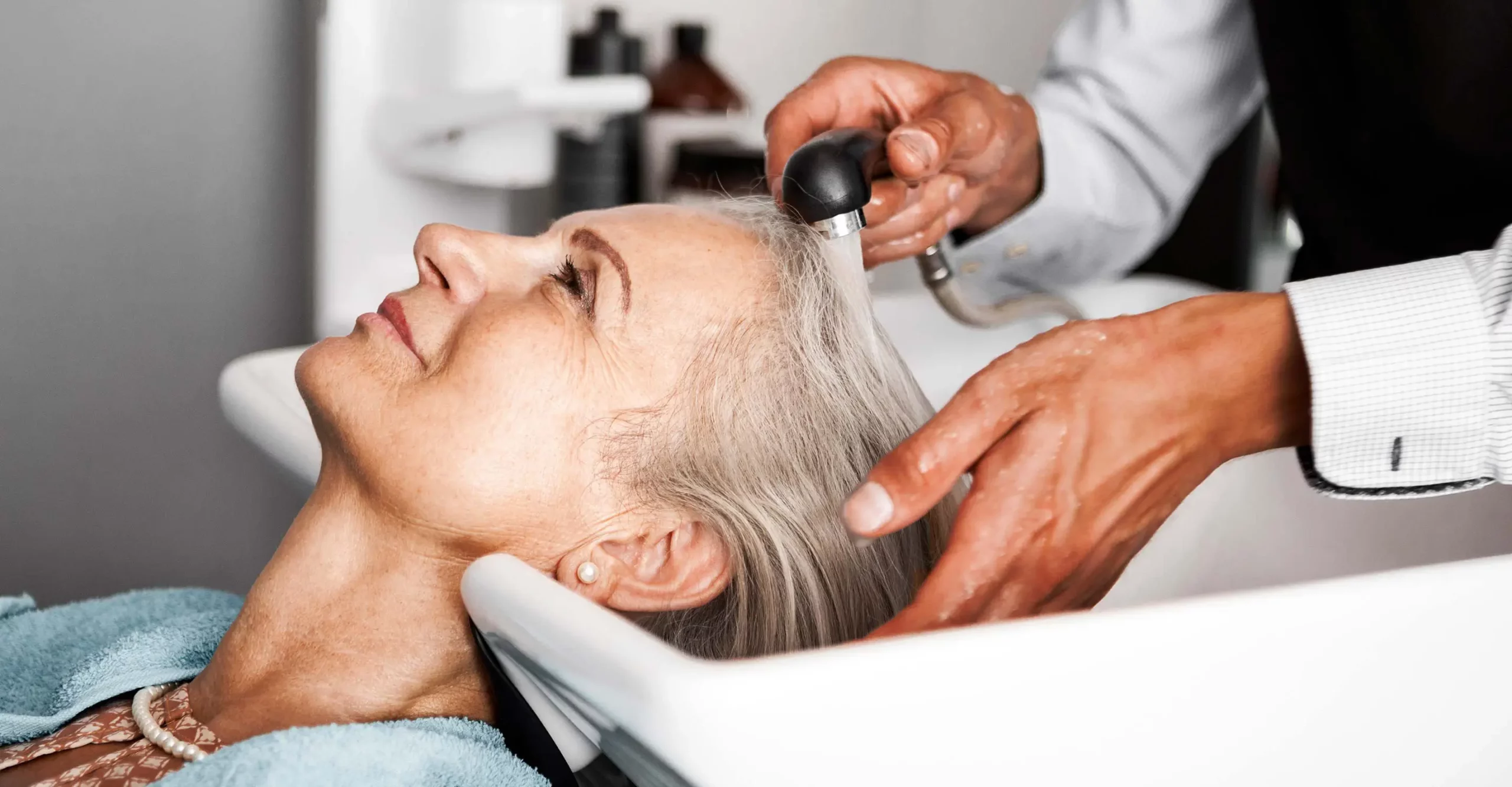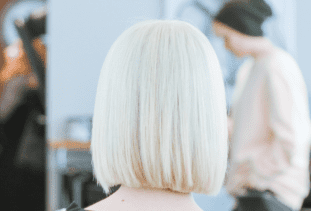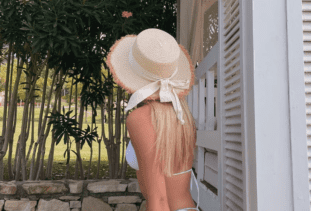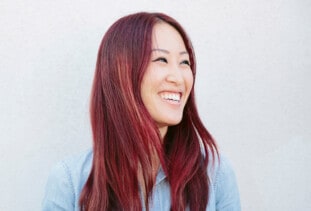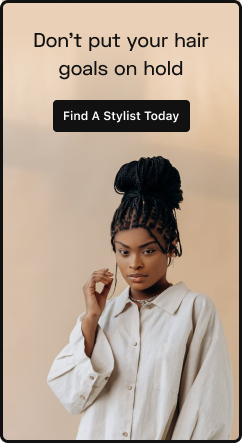There’s no shame in covering gray hair, and no shame in flaunting it. If you choose to cover it up, you can gracefully transition from gray to the color of your choice, whether it’s back to your natural color or something completely different.
There are many different hair colors to choose from, and with all of the options available, it may be hard to decide where to start. Luckily, our guide can be a great source of inspiration if you’re in the market to get your hair colored. Visiting a professional hairstylist can also help you find the perfect hair color for your skin tone.
In this guide, we cover the 14 best colors to cover gray hair, plus helpful tips and frequently asked questions to ensure your hair looks and feels its best.
Best blonde colors to camouflage gray hair
Blonde is one of the best colors to cover gray hair because there’s only a slight difference between blonde shades and silver shades, so the new dye can be easily blended. Take a look at these fresh blonde color ideas you can try out to cover gray hair.
Tip: Purple shampoo is essential for bleached blonde hair, both light and dark. This type of shampoo tones your hair to ensure it’s balanced and doesn’t turn yellow.
1. White blonde
If you’re looking to go blonde, a white- blonde shade is perfect for seamlessly blending gray regrowth. Since this is on the lighter side of the blonde spectrum, be prepared for at least two to three bleaching sessions with your stylist. This shade works best on gray strands that are on the lighter side (think pale silver or white).
2. Blonde highlights
Blonde highlights are also a great way to cover up gray hairs. Since the difference between silver and blonde shades is so minimal, gray roots won’t be very visible. Another benefit of opting for highlights is that your hairstylist will be able to hone in on all of the stubborn gray strands.
3. Champagne blonde
Champagne blonde is a bubbly shade that’s the perfect mixture of golden blonde and pale pink. This shade is also a bit iridescent, which makes it a nice change from your typical blonde. It also brings on a lot of shine, so it can add some youthfulness to your hair. This shade is not to be confused with beige blonde, which has more of an ashy hue with sandy undertones.
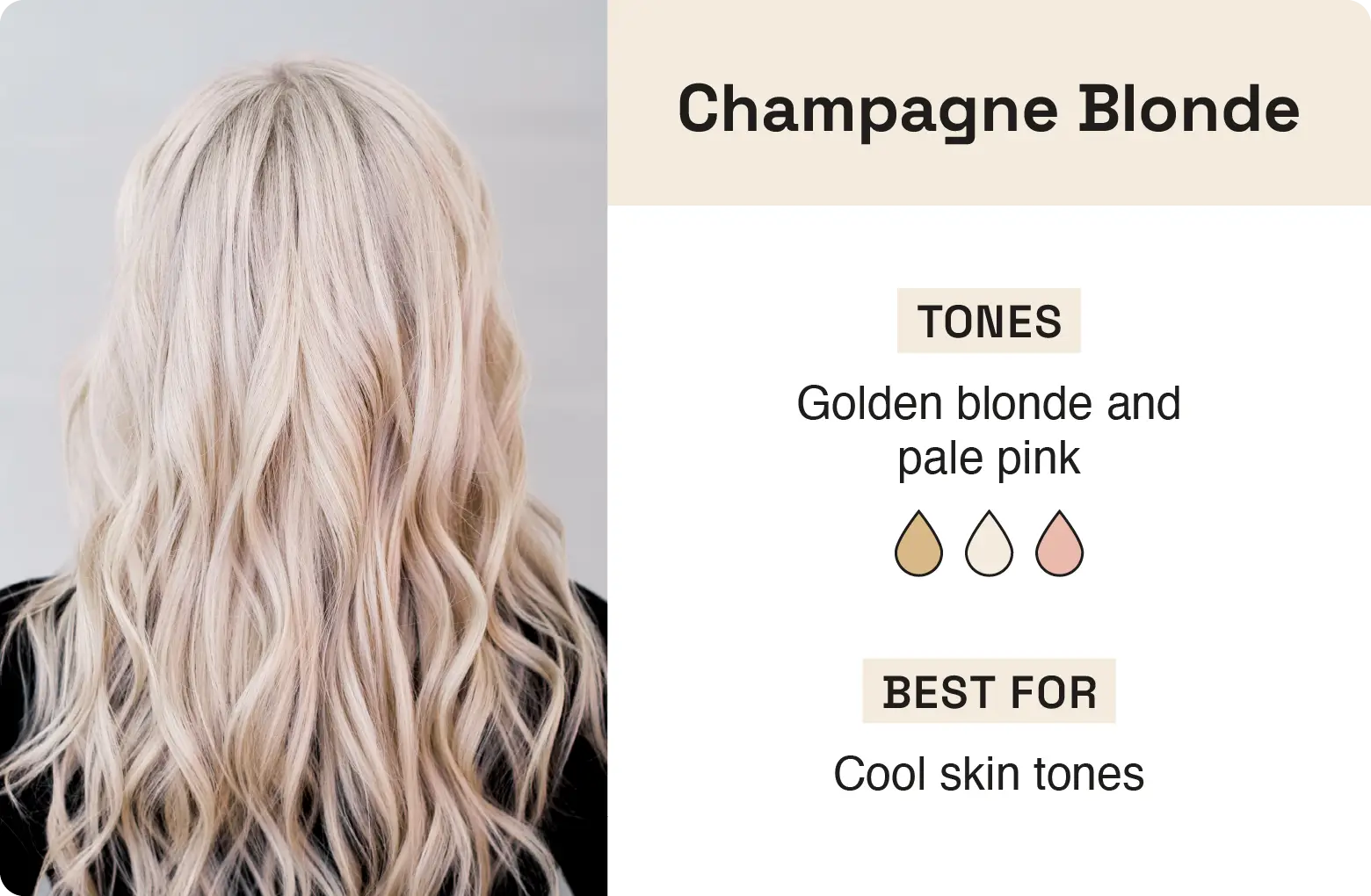
4. Dark-neutral blonde
Choosing a dark-neutral blonde shade is a good hair color for covering gray hair if you can’t decide between a warm or cool blonde. This shade is earthy and very natural looking — it can also look flattering and soft paired with the skin tones of those who have naturally dark hair. Instead of using purple shampoo for this shade, opt for a color-correcting blue shampoo; this works better at canceling the orange and brassy colors rather than the yellow that occurs in brighter blonde shades.
Best brunette shades for gray hair
Looking to go a little bit darker or stick to your natural brown? Transition from gray to brunette with these rich shades that are among the best colors to cover gray hair.
Tip: Look for less intense and softer brown shades — warmer brunette colors do a better job of brightening your facial features and can prevent you from looking aged. However, if you have a cooler skin tone, then a shade like ash brown may complement you well.
5. Butterscotch
Butterscotch brown, also sometimes called caramel brown, is a warm brunette shade with strong hues of gold. This is a great in-between color if you can’t decide between brunette or blonde to cover your grays. Since butterscotch is so dimensional with different layers of brown and gold, it does a great job of reflecting shine.
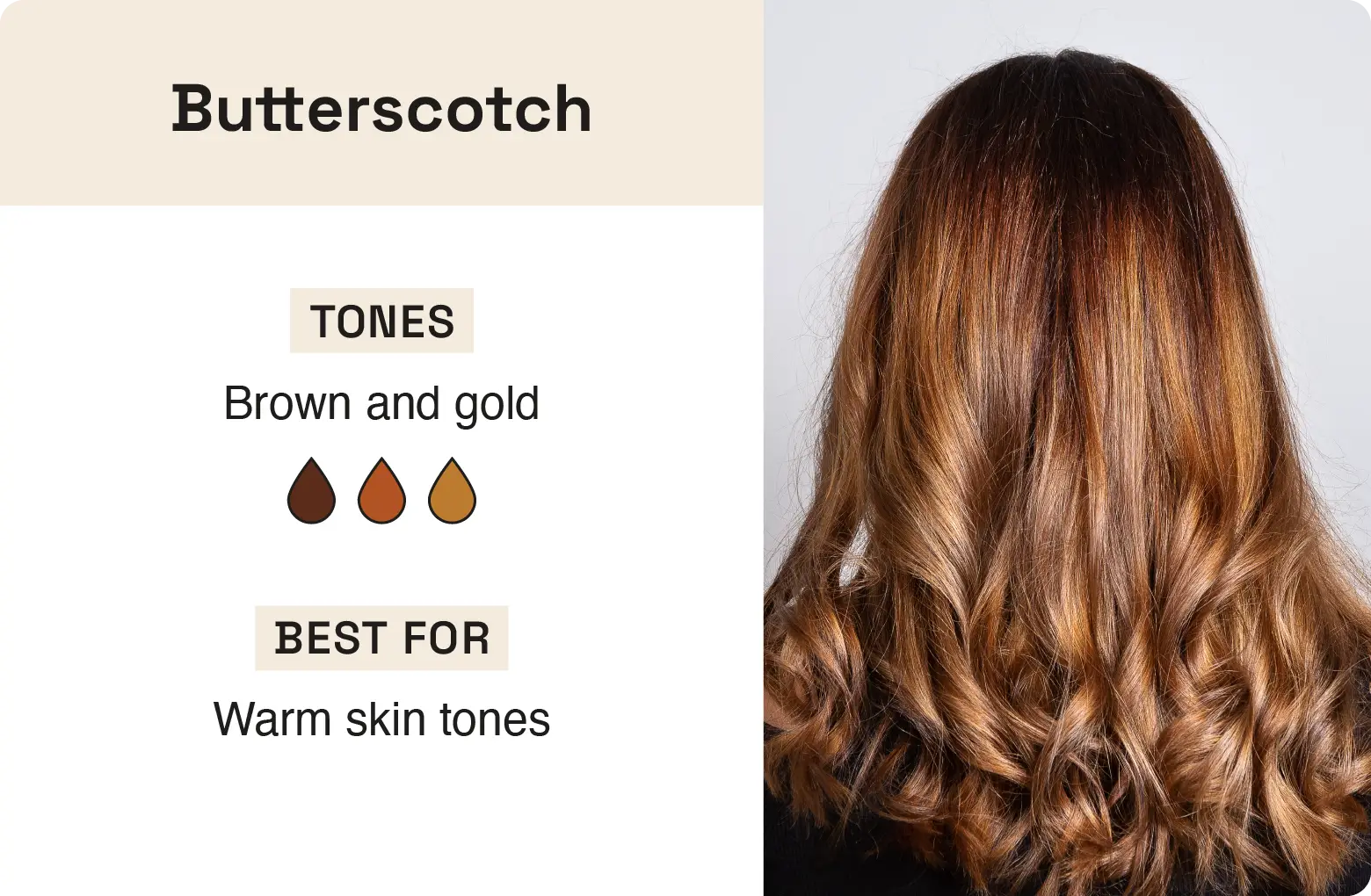
6. Ash brown
Ashy colors are a good choice if you have a cooler or neutral skin tone. Compared to other warm brunette shades, ash brown has more of a smokey look and does not have any red tones in it. Similar to dark-neutral blonde, ash brown can turn brassy easily, so be sure to have your blue shampoo on hand.
7. Chocolate brown
Chocolate brown is a true rich dark brown shade with a touch of mahogany. This is one of the easiest brunette shades to achieve and complements a wide variety of features, like various skin tones and both light and dark eyes. This shade can also help neutralize redness in your skin complexion.
8. Soft black
Soft black is just on the edge of the dark brown spectrum. Choosing a soft black over an intense jet blue-black shade will ensure that the grow-out at the roots isn’t as dramatic. Plus, it’s perfect if you want to add some sheen and shine to your locks. This shade is best for warm and darker skin tones.
Best red shades to cover gray hair
Although redheads have been known to not get many gray hairs, the color can lose pigment over time and become dull. To brighten up your color, check out these radiant red shades.
Tip: Red is one of the trickiest shades to cover gray hair and can easily turn your hair pink if the wrong tone is used. For these shades, we recommend seeing a professional color expert to match you with the right red.
9. Strawberry
Strawberry is a warm and reddish-blonde hue that’s slightly pink. It’s a pale but vibrant take on a red shade, and is sometimes referred to as Venetian blonde. It’s a flattering shade that can complement both warm and cool skin tones. Since this shade leans more toward blonde, it’s a great color to camouflage gray hair and blends well with lighter gray strands.
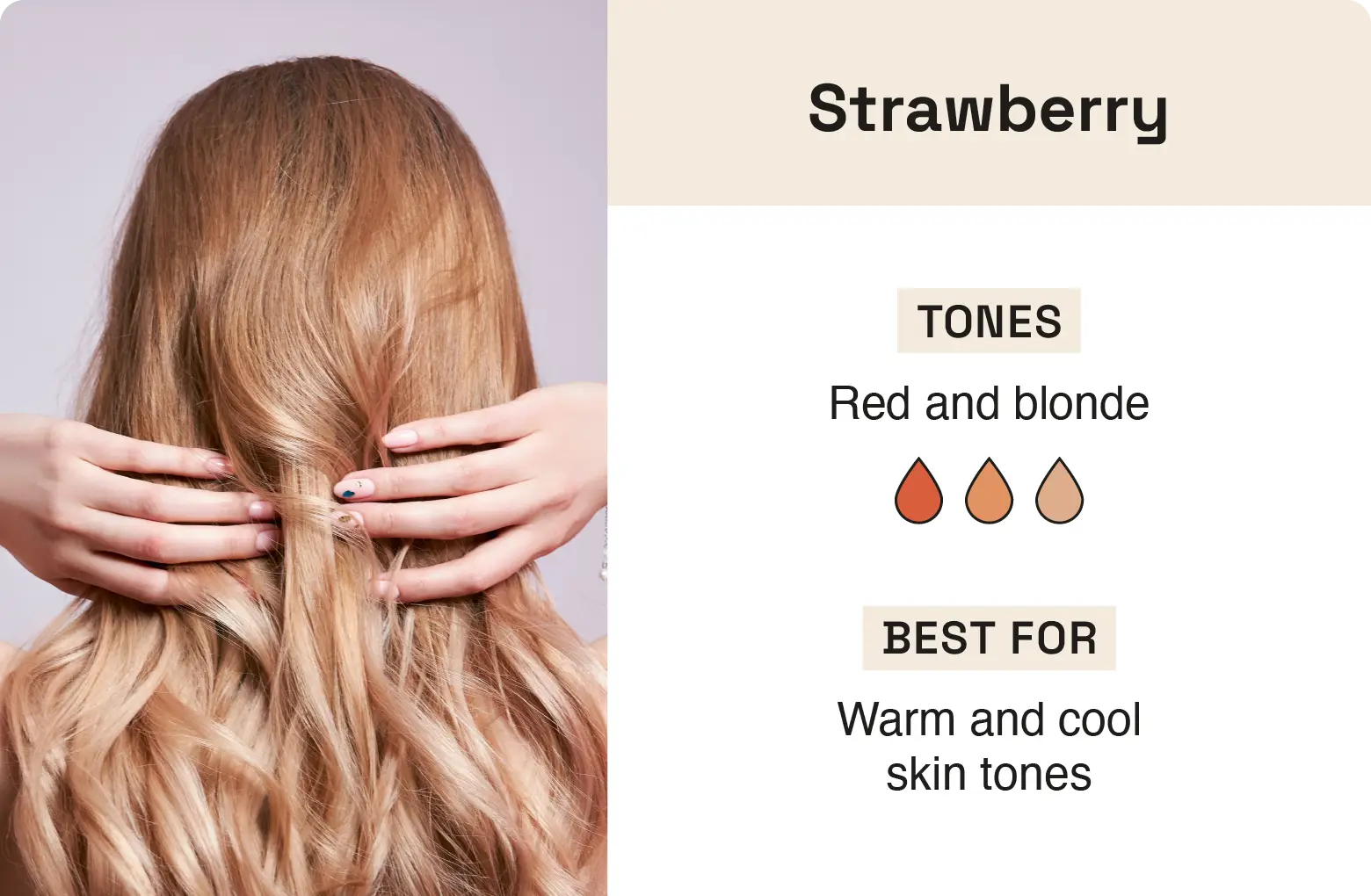
10. Copper
Choose copper if you’re looking for a red shade that’s bold and bright. This shade’s on the warmer end of the spectrum and includes base colors such as gold, orange, and yellow, which makes it bright. This shade also pops more since it’s typically on the lighter side and doesn’t have brown undertones like auburn.
11. Auburn
Auburn is a red shade with brown tones. This is considered a cooler shade since it also has a blue undertone and can range from a light brown/red to a deep and dark mahogany color. Because of its cooler tone, auburn complements cooler skin tones well.
Best silver shades to cover gray hair
If you can’t beat ‘em, join ‘em — embrace your natural grays and enhance the color with an edgy silver hue. Silver is one of the best colors to cover gray hair because it will instantly brighten your current grays and help tone down any brassiness. Read on to explore some of the best silver shades to cover gray hair.
Tip: With any color-treated silver hair, you must use purple shampoo to cancel out any yellow or brassy tones and enhance the vibrancy of the shade.
12. Silver
Silver is a great hair color for gray hair since you’re working with the graying process rather than against it. Plus, when your roots begin to show, they’ll blend in a lot better, so you can hold off on taking a trip to the salon for a bit longer.
Since the silver color is bold and bright, you can also opt for silver highlights instead of an all-over color for a more subtle look.
13. Salt and pepper
Salt and pepper is a low-maintenance look many hairstylists use to cover gray hair. This look blends an even mix of gray, silver, and black hair. You can even consider a reverse salt and pepper ombre look, which is gray on top that eventually fades into a warm black color — the perfect option if you want something low maintenance so you don’t have to constantly touch up your roots.
14. Lavender gray
Mix it up a little and opt for a lavender gray color, a unique twist on the classic silver. Although purple may sound a little risky, the muted lavender tones mesh perfectly with the ashy silver tones for a youthful and modern look. This shade is on the smokier side with blue undertones, so it will suit those with cooler skin tones.
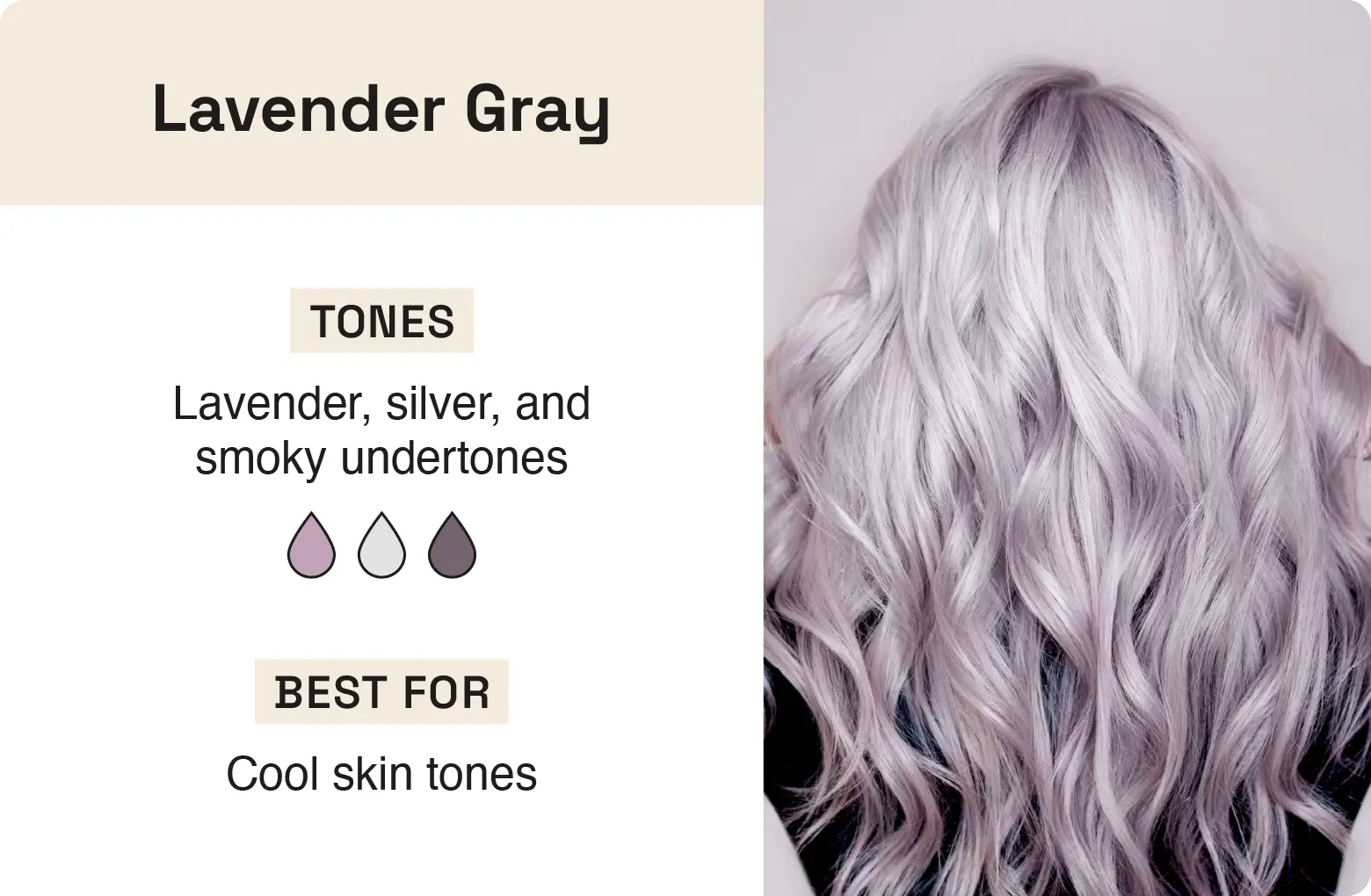
Tips for covering gray hair
Since gray strands tend to be stubborn and color-resistant, covering gray hair can feel complicated. Luckily, there are certain tricks you can utilize to help you reach your desired result post-dye.
As with all hair coloring jobs, make sure to protect your skin from the dye, including the top of your ears and your hairline. Here are some tips to consider if you’re looking to cover your gray and dye your hair at home:
Pick a shade or two lighter than your natural color
This tip applies if you have a mix of both your natural and gray hair. Consider sticking as close to your natural shade as possible, or go a maximum of one to two shades lighter than your natural color. This is because there can be a stark color contrast at the roots once your hair begins to grow out, which means your gray hair could stand out even more than before.
Use permanent color
Permanent color is recommended on hair that is over 50 percent gray. It’s also ideal if you seek 100 percent gray coverage. Since permanent dye contains more ammonia than semi-permanent dye, it does a better job of penetrating gray strands that are more coarse in nature. However, if you have a small amount of gray hair (25 percent or less) then you’ll likely be able to achieve solid coverage with semi-permanent dye.
It’s important to note that with both permanent and semi-permanent hair dye, it’s crucial to avoid rinsing the color too soon. This can cause uneven gray coverage or coverage that looks more translucent. When doing at-home color for grays, make sure to follow the suggested time on the box — set a timer to help you keep track. Typical hair dye takes around 30 minutes to fully process.
Let the color sit for longer
If your gray hairs aren’t getting enough coverage with the standard processing time, try letting the color sit for longer. This is typically the case for stubborn gray areas.
It’s recommended that you let the dye sit for an additional 15 minutes, so 45 minutes in total. If you’re worried about the processing time, try doing a patch test first or seek advice from a certified hairstylist.
Go to a professional for help
If you’re still unsure, go to a professional for help. An experienced hair colorist can help steer you in the right direction and provide great advice. Plus, the dye used in salons contains less harsh and concentrated chemicals and more protective ingredients than box dye, so seeing a pro can be healthier for your hair in the long run.
FAQ
Still looking for some more information about coloring your gray hair? Below are some frequently asked questions that can help guide you through the process.
Gray hair can be challenging to cover because it’s more coarse than your original hair. This is due to those follicles producing less oil, which also makes them drier. Hair dye typically has a tougher time penetrating coarse and dry hair, which means you’ll likely have to leave the dye on for longer than you would with your original hair.
Since hair dye needs to sit longer on gray hair, your strands may be more prone to dryness and damage. In order to keep your hair as healthy as possible, it’s recommended to touch it up every four to six weeks.
How often you should dye your hair also depends on how fast your hair grows and if you mind having gray roots peek out. If you’re in between dyeing and you want to touch up your roots, you can try temporary methods to cover them up, such as hair “mascara,” “concealer,” and powders. You can also opt for a more low-maintenance coloring, such as an ombre or a balayage which provides less harsh grow-out lines.
There’s nothing like walking out of the salon with a new ‘do — a new color can make you feel like you want it to last forever. Unfortunately, that’s not the case, but there are some care tips to help maintain your hair color at home and ensure your freshly colored hair stays healthy and shiny:
Use a heavy-duty mask: Since coloring can be extra drying on already coarse gray hair, use a hair mask to help moisturize your strands. Only use a heavy-duty mask once or twice a week to avoid buildup.
Try toners: As mentioned previously, toners can help reduce the look of yellow or brassy tones if you choose a lighter hair color, such as blonde. Purple shampoo is great for canceling out yellow tones, and blue shampoo works to cut out orange and brassy tones.
Sleep with a satin pillowcase: Pillowcases with satin or silk fabric can help reduce friction on your hair, which often leads to split ends, tangles, knotting, damage, and even the feared bedhead.
If you choose to embrace your gray hair for a bit and take a break from the salon or are in between hair dyes, here are some care tips for natural gray hair:
Protect your hair from the sun: Gray hair can burn more easily due to its porosity and texture (it can even turn yellow in the sun), so it’s essential to cover up your hair with a hat or umbrella if you plan on being outside for an extended long period of time.
Reduce the use of hot tools: As mentioned above, gray hair is more prone to damage and yellowing from heat, and that includes hot tools such as blow-dryers, flat irons, and curlers. If you want to style your hair with hot tools, be sure to not go above 350 degrees and use a heat protectant. 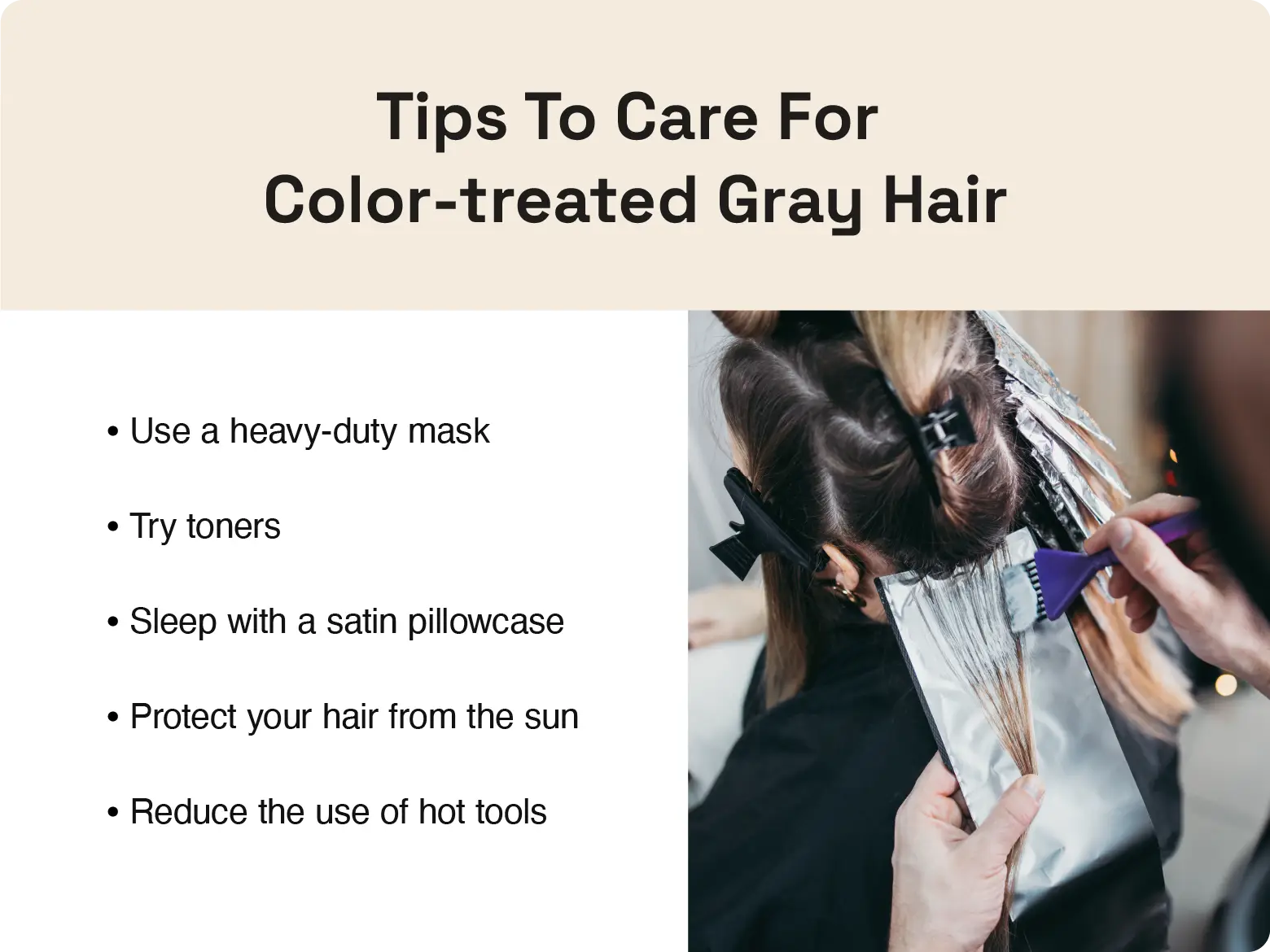
Whether you choose highlights or opt for all-over color is up to you and the type of style you’re looking for. It can also depend on how many gray strands you have. For example, if your hair is almost completely gray, you’ll want to consider a complete hair dye since there’s more surface area to cover.
On the other hand, if you have just a few gray hairs here and there, then some highlights can target those stands and blend them into your natural hair.
Find the best hair color to cover your grays
There are many different shades to choose from if you’re looking to cover up your grays, however, blonde and silver are the top contenders for the best colors to cover gray hair. No matter which shade you choose, be sure to keep it healthy with the tips mentioned above.
Dyeing your hair can be done at home, but for the best results, we recommend consulting a professional hair colorist near you to help you find the right hair color.
